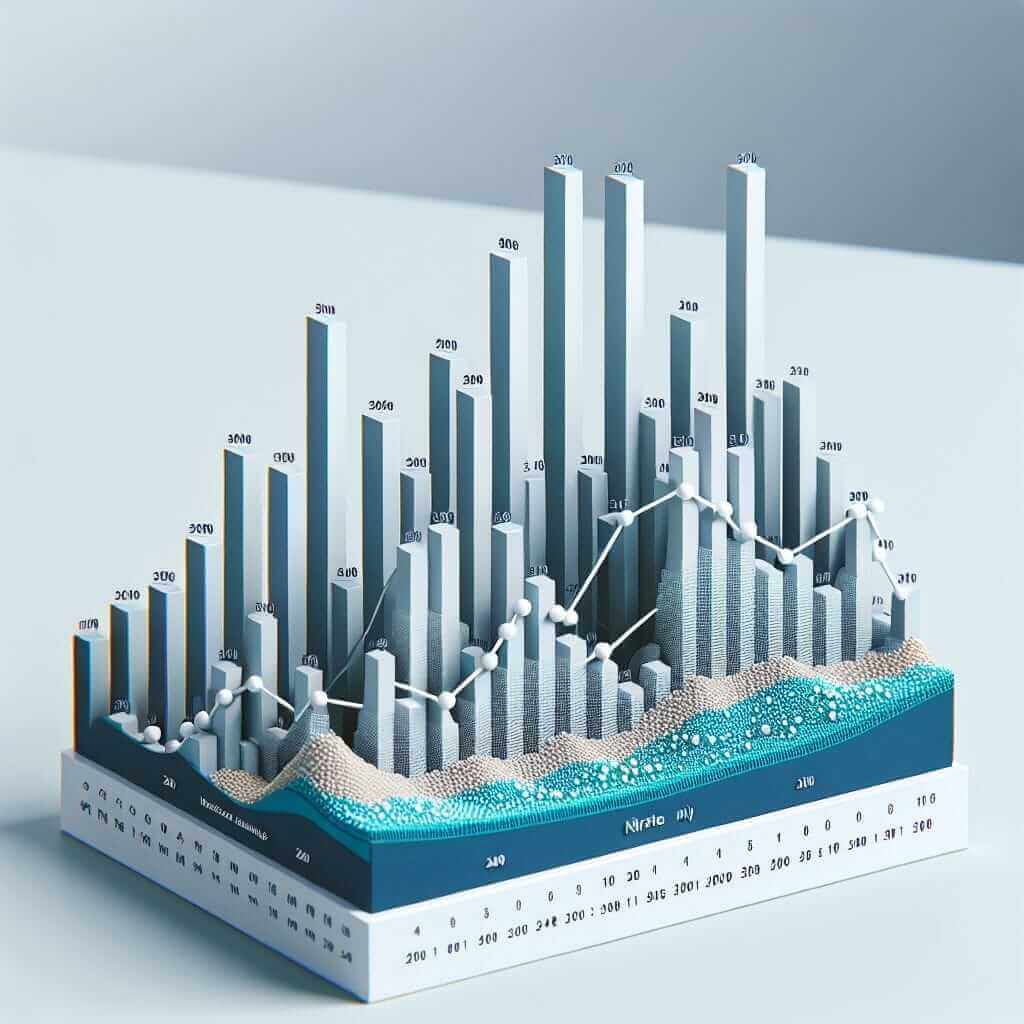The issue of water pollution, particularly in major rivers, frequently surfaces in IELTS Writing Task 1. Understanding how to interpret and describe data related to this topic is crucial for achieving a high band score. This article will guide you through analyzing data on “Water Pollution Levels in Major Rivers (2000-2023)”, equipping you with the vocabulary and techniques to excel in your IELTS exam.
Sample IELTS Writing Task 1 Question
The chart below shows the average concentration of nitrates (mg/L) in the River Rhine from 2000 to 2020.
Summarize the information by selecting and reporting the main features and make comparisons where relevant.
(Insert a created bar chart illustrating the average concentration of nitrates in the Rhine River from 2000 to 2020 with data points every 5 years. Show a general fluctuating trend with a peak around 2010 and a gradual decrease thereafter.)

Data Analysis
The bar chart depicts the fluctuation in nitrate concentration in the River Rhine over two decades.
Model Answer
The provided bar chart illustrates the average concentration of nitrates, measured in milligrams per liter (mg/L), in the River Rhine between the years 2000 and 2020.
Overall, the nitrate levels in the Rhine exhibited a fluctuating trend throughout the period under review. At the beginning of the millennium, the concentration stood at approximately X mg/L. Over the subsequent five years, a noticeable surge was observed, with levels reaching Y mg/L in 2005.
The following five-year period witnessed a peak in nitrate concentration, reaching Z mg/L in 2010. However, from this point onwards, a gradual downward trend emerged. By 2015, the concentration had decreased to W mg/L, and this decline continued, albeit at a slower pace, reaching V mg/L by the end of the recorded period in 2020.
In conclusion, despite some fluctuations, the data suggests an overall improvement in water quality within the River Rhine, particularly after 2010, as evidenced by the decreasing nitrate levels.
(Word count: 160 words)
Key Points for Writing
- Paraphrase the question: Never copy directly from the question. Use synonyms and different sentence structures.
- Overview: Provide a general overview of the main trends in the data.
- Specific details: Support your overview with specific data points and comparisons.
- Accurate language: Use appropriate vocabulary to describe trends (e.g., increase, decrease, fluctuate, peak, plateau).
- Concise writing: Be clear and concise in your language. Avoid redundancy.
Vocabulary Focus
- Concentration (n.) /ˌkɒn.sənˈtreɪ.ʃən/ : The amount of a substance in a liquid.
- Nitrate (n.) /ˈnaɪ.treɪt/ : A type of chemical compound often found in fertilizers and sewage, which can pollute water.
- Fluctuate (v.) /ˈflʌk.tʃu.eɪt/ : To rise and fall irregularly.
- Surge (n.) /sɜːdʒ/ : A sudden and great increase.
- Peak (n. & v.) /piːk/ : The highest point of something.
- Gradual (adj.) /ˈɡrædʒ.u.əl/ : Happening slowly over a long period.
- Decline (n. & v.) /dɪˈklaɪn/ : A continuous decrease in something.
Conclusion
Mastering the art of describing data related to water pollution is essential for success in IELTS Writing Task 1. By understanding the key vocabulary, practicing data interpretation, and employing effective writing techniques, you can confidently approach this topic and achieve your desired band score. Remember to analyze the data carefully, highlight the key trends, and support your statements with specific evidence.